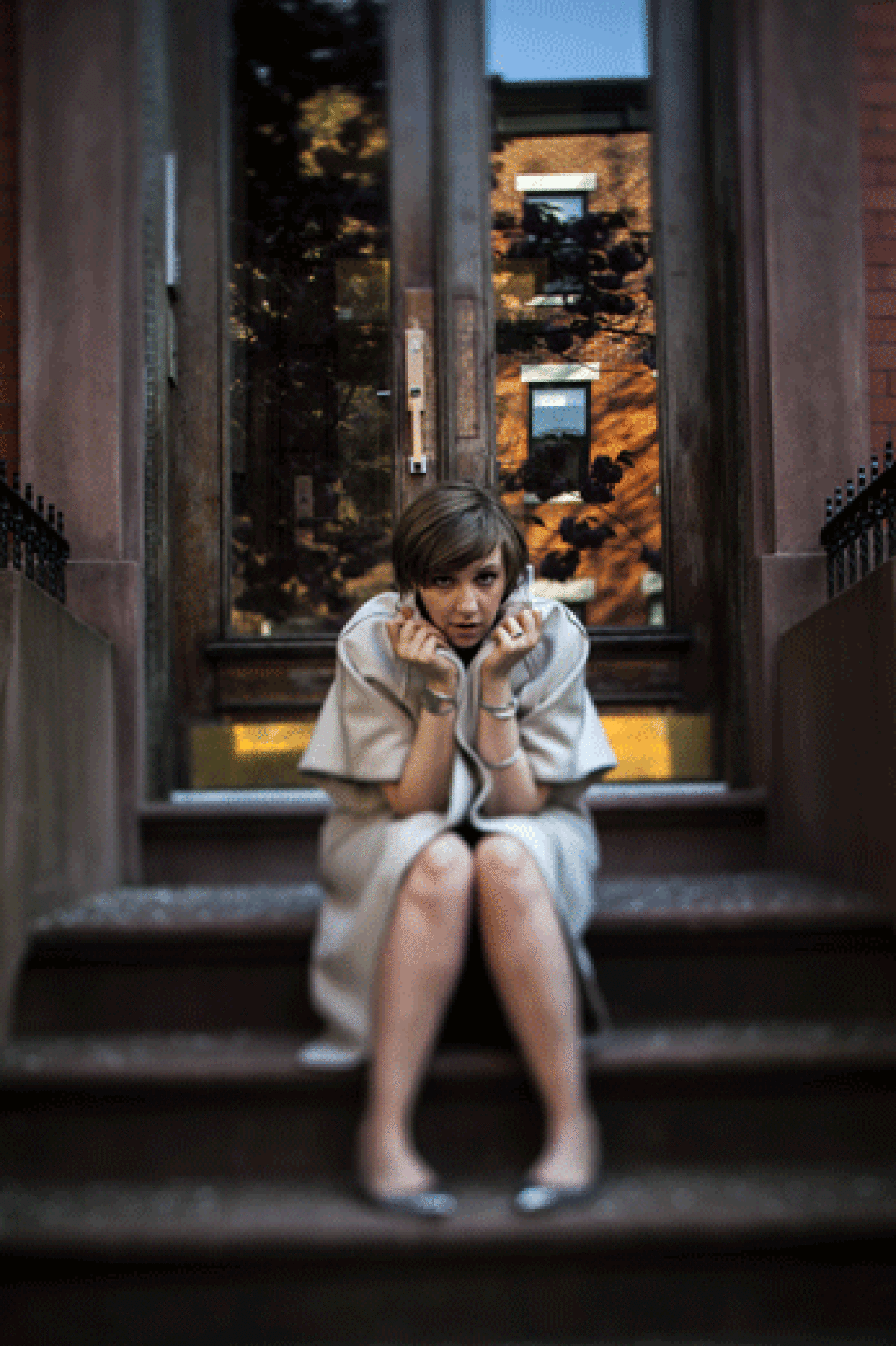Covering (up) Lena Dunham

Lena Dunham, creator and star of the incessantly analyzed HBO series “Girls,” is on the cover and featured inside the February issue of Vogue. As things tend to go with Dunham, this was not an occasion that could go uncommented upon. If you missed the major plot points, here’s a summary:
Dunham was photographed by Annie Leibovitz in some typical single-gal-in-New York scenarios, for instance leaning against a bathtub in a cocktail dress and standing on the street wearing Alexander McQueen with a pigeon on her head.
Because this is Vogue, the images were digitally enhanced, standard practice in fashion photography. Because the model is Dunham, who makes a point of exposing her shockingly average physique and has become a symbol of body acceptance, some kulturkritic types wondered if it was hypocritical of Dunham to allow the photos to be altered.
Last Thursday, the website Jezebel, which has made its name in part by calling out magazines that digitally retouch models to sometimes absurd degrees, offered $10,000 for the unretouched Dunham pix. Within two hours, someone (who presumably worked for the magazine but has now been fired and so will need the $10,000) supplied them.
How drastic — and therefore insulting — were the changes? Not very, it turned out. There was some subtle narrowing of jaw and raising of waistline. The dress in the bathtub shot was pulled up to make the neckline higher and the midsection smoother. On the cover, an eyebrow was filled in and a shoulder dropped slightly.
So, an outrage!
Except the outrage was directed mostly at Jezebel, which was accused of using Dunham to draw traffic and wax indignant over a practice that, though often insidious and problematic, in this case actually wasn’t so bad. Even Dunham, who seems purposely (and politically) to shoot herself in “Girls” from angles and in clothes that do her no favors, seemed befuddled by the backlash.
“I don’t understand why, Photoshop or no, having a woman who is different from the typical Vogue cover girl could be a bad thing,” she told a reporter Friday.
She’s right. It’s been refreshing recently to see more non-modelish models on fashion magazine covers. Elle had comic actress Melissa McCarthy in November, and writer-performer Mindy Kaling appears on this February’s issue. Both covers sparked debate about the tyranny of the media’s narrow beauty standards and whether these women had been encouraged to hide their ordinariness under less-than-revealing clothing or poses. But the general consensus seems to be that such diversity alone is a win-win: healthy for the culture and good publicity for the magazine.
In other words, “regular looking” models are valuable. They generate discussion. They’re a break from sunken cheeks and whippet bodies. They deserve dignity. And, counterintuitive as it may sound, that also means they deserve Photoshopping.
If there’s any tyranny more ruthless than media/celebrity/mass culture beauty standards, it’s the tyranny of the camera itself. For every portrait that makes someone look fantastic, there are thousands more photographs that do cruel injustice to their subjects. They highlight blemishes and put on pounds. They draw attention to lines and creases and scars and lumps that go largely unnoticed by those who know us in real life.
To pose for a photograph that will be seen by millions of strangers is to have nothing to offset those imperfections. It is to lose personality and history. It is to put before the world what we happen to look like during the split second the shutter clicks as if it were the sum total of our being.
And because that’s not a fair proposition, it seems reasonable to take steps to right the balance. In that sense, some Photoshopping might be seen not as a betrayal of the soul but a way of safeguarding it.
Of course, in a perfect world, those lumps and blemishes would be sufficiently integrated into our concept of beauty that digitally removing them would seem as absurd as removing a nose or an ear. But perfect worlds, like perfect bodies, are a fantasy born of magazines like Vogue — they just don’t exist. Otherwise, we might all be walking around with pigeons on our heads.
mdaum@latimescolumnists.com Twitter: @meghan_daum
More to Read
A cure for the common opinion
Get thought-provoking perspectives with our weekly newsletter.
You may occasionally receive promotional content from the Los Angeles Times.











